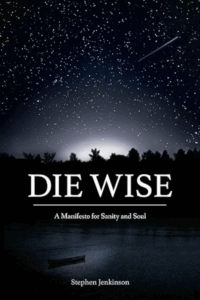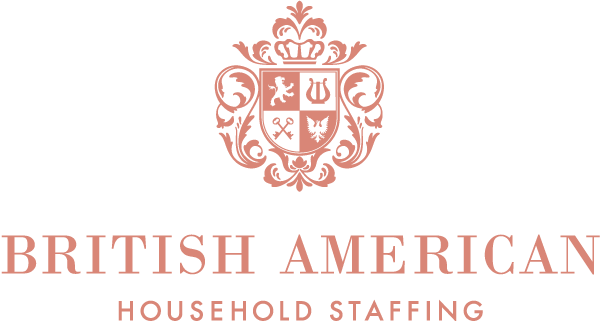
Introducing Martha Roth,
End-Of-Life Midwife
This week, we had the privilege of talking to Martha Roth, an end-of-life midwife. Also known as a death doula, an end-of-life midwife guides individuals and their loved ones through the dying process. They make sure the person’s wishes are heard, understood, and respected. They can help navigate difficult conversations and advise on the options available.
Before transitioning into end-of-life care, Martha spent several decades working as a birth doula and midwife. She recently took the time to share some of her insights on death, dying, and how we can support those we love through this sacred life transition.

“You and I will die. This is a given, entirely proper. It is a whorl in the thumbprint of the Maker of Life. But the manner of our dying is not a given. That, with deep labor, is up to us. This is one of the life gifts entrusted to us at birth, dazzling as the night sky and burdensome as any vision is of how it all could be.”
“That is a quote from the book, Die Wise, by Stephen Jenkinson who identifies himself as an activist, teacher, author and farmer. He has been working with the dying for more than 35 years. His offerings have been a valuable resource for me, particularly this book.
I call myself an end-of-life midwife. I have spent the past 40 years as a doula and then a midwife attending births primarily in homes but also birth centers and hospitals.
I now have the opportunity to use my doula and beginning-of-life midwifery skills for end-of-life care.
We are at a time in the United States where certain conditions have become evident, specifically that there is no sustainable healthcare system in this country and that the business of health insurance has sabotaged the delivery of healthcare. This reality along with the aging of the American populace has provided a perfect moment for this midwifery model-of-care to be used to promote an awareness of the obstacles present in caring humanely for the dying.
The focus of this model of care is planning ahead with all those who will be participating in the care to enhance an individual’s life experience through to their dying.
I would encourage all of us to begin having conversations with those we love and who love us well before the need is there.
Over the past few decades a great number of books on death and dying have been published. The authors of these books have come at the subject from the angle of their own expertise whether it is spiritual, medical, holistic, religious, personal or psychological.
Regardless of your bent you can find someone who has published a critique from their perspective on how we live well or poorly until we die well or poorly.
We have tremendous resources here in the US. However, these resources are being used to aggressively extend lives with a deep resistance to accepting that our lives are supposed to end. It seems to be a moment when we can redirect our resources toward a more humane model of dying.
I am using the home birth model of care because that is what I have been doing. It is true that not everyone desires care in their home.
The majority of people who are asked say they would prefer to die at home and yet a majority of people end up spending their last days or longer in the hospital.
I have been consulted about the conditions that have developed, most commonly around an aging parent. This is my opportunity to recommend that there be a meeting with all those involved with this person. I recommend that there be an objective, knowledgeable person present at the table.
She will have the answers to specific questions that will likely come up and will make sure that the focus stays on the individual who is dying.
Through my personal experience and what I have learned from others, how a person dies proves to be one of the most important factors in the health of the relationships of those family members and friends who live on.
If there are those present who feel they are unable to honor the wishes expressed by the dying person, then they are invited to leave the table without judgment.
Resistance to accepting an unfamiliar path is most often fear-based. Fear is often present when knowledge is lacking.
Once that person’s questions have been answered and desires have been made clear, then a plan can begin to take shape.
What I know from my midwifery work is that IF there is no plan or there is poor preparation, care decisions will likely be made based upon expediency, habit or fear of litigation often at great cost to the individual and family.
There will naturally be questions regarding time frame, legalities, paperwork, specific laws, etc.
Once the conversation has begun, you can ask specific questions. Some of these questions help to normalize the discussion.
For example, asking a person what they think they would like done with their body after they die can be very helpful. There was one gentleman who said he would like to donate his body to a medical center. The family had no idea he wanted to do that and we spoke about the need to plan ahead because there is paperwork that needs to be filled out ahead of time in order to make this donation. In this case it not only gave the family a task to accomplish but a certain feeling of gratification that they learned this information when there was time to get the necessary paperwork in order. There was also an opportunity for the family to discuss how this information pushed them to rethink what would be necessary for them to do at the time of his death. It also brought a moment of sadness as the family members took in the reality that, in time, there would be a body to be handled.
In another case an individual wanted to be cremated on a funeral pyre on her property. In consultation with the funeral home it was learned that only one State allows for funeral pyres and she did not live in that State. There ensued some joking about how to spirit her body out of State to honor her wishes.
The answer to this question is only part of the point. What matters is that the person is able to say, “this is what I want”. It can often be a great relief to the family to have information that eliminates any potential disagreements that might have arisen after the death. This working together to honor the well-thought-out plans of a dying person can bring together those who might otherwise splinter.
Another useful question that can normalize the planning and bring the family to a place of comfort is to ask the individual what they would like said about them after they die.
Again this is an active task that provides valuable information from the dying person.
The conversation also addresses the practical questions of necessary paperwork, who is responsible for what, is there a full understanding should Do Not Resuscitate and Do Not Transport orders come into play. It can be surprising how little individuals actually understand about these orders.
Then there is the question of the right to die with dignity. Recently, there has been progress in New York State regarding an individual’s right to medical aid in dying. The NYS Assembly and Senate have passed the MAID bill. It has been sent to Governor Hochul and awaits her signature.
Until these bills are passed into law, one option individuals can choose to control their own life and death is VSED (Voluntarily Stopping Eating and Drinking).
This is an active choice initiated by the dying person and supported by loved ones.
Many of us have had pets that let us know when they’ve had enough by declining nourishment and hydration. We don’t force-feed these animals. We hold them, we soothe them, we love them and we thank them for being so smart. Don’t we, as humans deserve that kind of respectful care?
Today I suggest that, if you haven’t already, you make a plan to have The Conversation about death, your death, with those who love you and who you love.
Some of you might already be familiar with these resources. There is a national volunteer organization, Compassion and Choices, which has a presence in all 50 States. You can access their material through the website. It offers comprehensive details on all aspects of end-of-life planning.
Another important organization, End of Life Choices New York, has been working for over 20 years “to achieve better care and more choices for the dying through advocacy and education campaigns, and free counseling for patients and their families”.
Initiating the conversation is often the most difficult part but once it has begun it will not stop. There can be great joy in discussing death and dying. It comes with being alive.
And finally as an exercise I suggest that you think about what you would like said about you after you die:
Either write the beginning of your own remembrance or ask someone who loves you to write it.”
If you’d like to connect with Martha Roth, she can be reached at martharoth@me.com.
Further Resources
Advance Directives Guide & Templates from End Of Life Choices NY.
Jenkinsen, Stephen. Die Wise. Berkeley,CA: North America Books 2015.
Ostaseski, Frank. The Five Invitations, New York, NY: Flatiron Books 2017.
Warraich, Haider. ModernDeath, New York, NY: St. Martin’s Press 2017.
